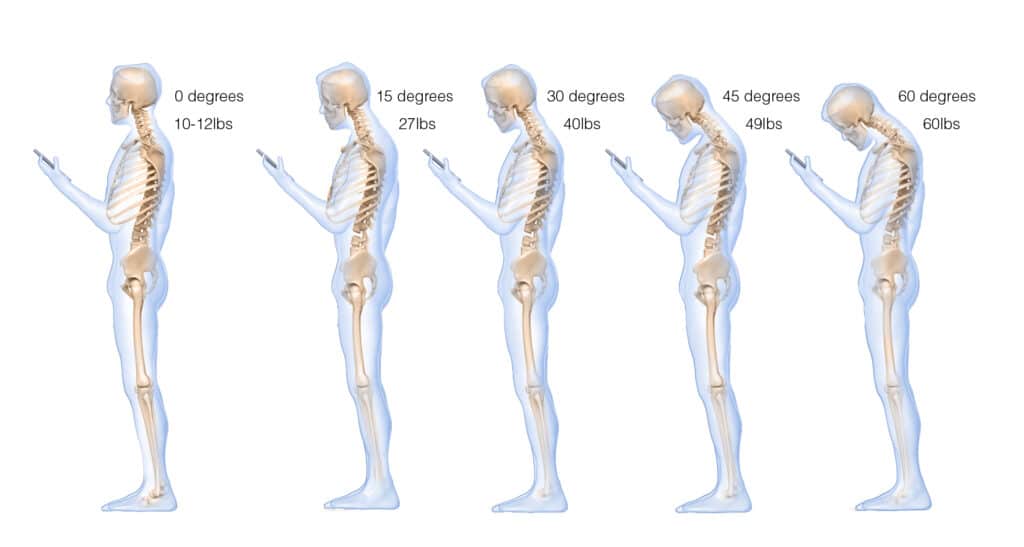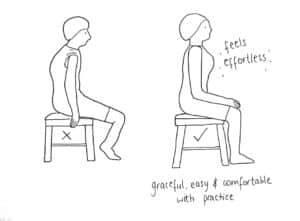Health Talk: Ergonomics and Posture
Sheetal Patel, our director of rehabilitation, provides information you need to know to about ergonomics and tips, including exercises, for improving your sitting posture. Watch the video or read the transcript below.
Subscribe to our YouTube channel.
Ergonomics and Posture
Hi everybody, this is Sheetal, and if you don’t already know me, I’m the director of rehabilitation at Miller’s Grant. It is so awesome to see you all, even though I’m not really seeing you, but you’re seeing me. Hope you all are doing well and staying safe. I wanted to do my monthly health talks again for you all since I haven’t seen everyone in the hallways lately. Today’s health talk is on posture and ergonomics. I have picked that because I felt you all may be sitting around a lot on your sofas or chairs in front of your desk and things like that. So, just a little bit of a reminder and some tips.
What is Ergonomics?
Ergonomics is the study of peoples efficiency in the working environment. Ergonomics and posture are also key in our home environments as well.
Sitting Posture
Why is sitting posture so important? In past talks, I have mentioned that when you have good posture you not only look better, you also look younger and more in tone as well as feel better.

But why else is posture important? Medically and therapeutically speaking good posture decreases the stress on your joints and muscles. This is key not only as we are aging but even when we are younger. Poor posture will really be felt when you are doing functional tasks, if not that day then later. Good posture also decreases the strain on your body as you are moving. For instance, reaching up to a cabinet or reaching down. Poor posture makes those actions more difficult. Whether you’re sitting or standing, the study of ergonomics and utilizing correct posture is extremely important.
Poor Posture
Poor posture can become a habit, so much so that by the time you even start to notice that your posture is off, you are going to start to have pain. It can lead to stiffness and pain, and it is important to break that cycle. No one wants the hunchback that can come with age and poor posture. That hunchback is a kyphosis (excessive curvature of the spine causing a hunchback) of our mid to upper back or even the middle back.
What NOT To Do
Let’s say in your apartment or house you’re sitting watching TV or working at the dining room table. You may slide down low on the sofa or chair. What is wrong with this?
First, your neck is not supported correctly and neither is your back. The hips and knees are not supported either. What happens? You may be comfortable, as long as your head is supported, but if you suddenly stand after sitting like that for 20 – 30 minutes, your mid back may suddenly spasm because of how you go to stand up. You feel it right away because you have been in one position with poor posture. Then, when you try to stand, your muscles are not strong enough, and that is when you get muscle strain.
As mentioned before, when you are sitting in a chair it is important to be upright so that your hips and knees are in what are called the 90 – 90 position. Your feet need to be firmly touching the ground, and you are not reaching for the ground at all. Dangling feet are not a good way to have good posture. You don’t get support, and it will pull on your lower back.
Our lives have become more and more sedentary and Miller’s Grant is working hard to help you move around, with Ashley, Courtney and Lynn’s help. However, we are watching Netflix and movies more, so we are more stagnant and staying in one position too long. Our bodies mold into that position. What can you do?
- Move around every 10 – 30 minutes; this alone can really help.
- Exercise on a daily basis, which I’ll cover later.
 Many of us spend a lot of time on our computers. Not only is your sitting position important, but it is also important to support your wrists as well as your feet. The height of the table is important, as well. Be sure to sit in a way that your posture is correct, your feet and wrists are supported. Many of us sit cross-legged. This is not a supportive position, so be mindful of where your legs and feet are. Not moving can affect your circulation and muscles, so again … get up and move around! Try to have your ankles a little in front of your knees.
Many of us spend a lot of time on our computers. Not only is your sitting position important, but it is also important to support your wrists as well as your feet. The height of the table is important, as well. Be sure to sit in a way that your posture is correct, your feet and wrists are supported. Many of us sit cross-legged. This is not a supportive position, so be mindful of where your legs and feet are. Not moving can affect your circulation and muscles, so again … get up and move around! Try to have your ankles a little in front of your knees.
Poor posture can also cause us to be a little tense. Periodically, move your upper body. Bring your shoulders down and take in a deep breath. Exhale and then relax your shoulders, always trying to have your forearms and elbows supported. If you are in a recliner or on a sofa, try to have something that supports your arms, so your shoulders are not so high up.
Phones, Puzzles and Reading
It is so important to sit up straight and look forward without straining the neck. Slumping when we are on the phone happens so quickly, so be mindful of how you are sitting when you are talking on your phones. This is where the study of ergonomics and posture transfer over to the home environment.
Most of us love doing puzzles and reading. Just like sitting for long periods, being aware of your posture is important. It is so easy to be in one position and get involved in a good book or puzzle. Get up and move around, move those shoulders and neck. It doesn’t matter your age. Using the chair back rest and sitting straight is vitally important.
Exercises
When I’ve done some of my back strain and exercise classes, I’ve demonstrated a towel roll by taking a towel, not really large beach like towel, but somewhere in between a hand and bath towel, rolling it up and putting it in the small of your back area, so you can come all the way back in a chair and just have some lumbar support. View video segment.
The other exercises I’ll be covering are not strengthening exercises rather postural exercises. Again, it is important to not be slumped, and sitting in a supported and straight position to avoid unnecessary strain.
Seated Arch Slump
First you’re going to sit up a little straighter, than what you’re going to do is gently arch your lower back so your chest sticks out a little, then slump back down a little. Hold for a bit, and then arch back up. Hold this for three counts, and then slump back down. Repeat this three times. Basically, you are trying to open the front and arch the back just a bit. View demonstration.
Shoulder Rolls
Once you have repeated the back arch exercise three times, then roll your shoulders. Your hands need to be supported on you lap, and you are going to roll your shoulders back, hold and relax. Repeat this three times. View demonstration.
Chin Tuck
A lot of us get that forward head posture where our head is no longer sitting on top of our spine. We get like this because we’re writing, reading and on our phones and computers a lot. We’re going to do a chin tuck.
You’re going to sit up straight, pull your chin straight back, hold, release and jut it out a little bit. Repeat this three times. You will feel your muscles working in the back of the neck. This is not muscle strain. What we are trying to do is strengthen those muscles, so we can pull your neck and head up into the proper position. View demonstration.
Shoulder Blades
Start with correct posture and imagine you have a little pencil in the center of your upper back. Squeeze your shoulder blades together, like you’re trying to grasp that pencil, then hold and relax. Repeat three times. View demonstration.
We have reviewed four exercises that include:
- Seated arch slump
- Arch shoulder rolls
- Chin tucks
- Scapular (shoulder blade) retractions.
These simple and important exercises should be done daily to help with ergonomics and posture and avoid negative effects, down the road.
For more preventative/strengthening exercises, view our Osteoporosis Webinar with Exercises. Learn about our Rehabilitation services including outpatient services for Howard County residents who have Medicare as their primary insurance.


